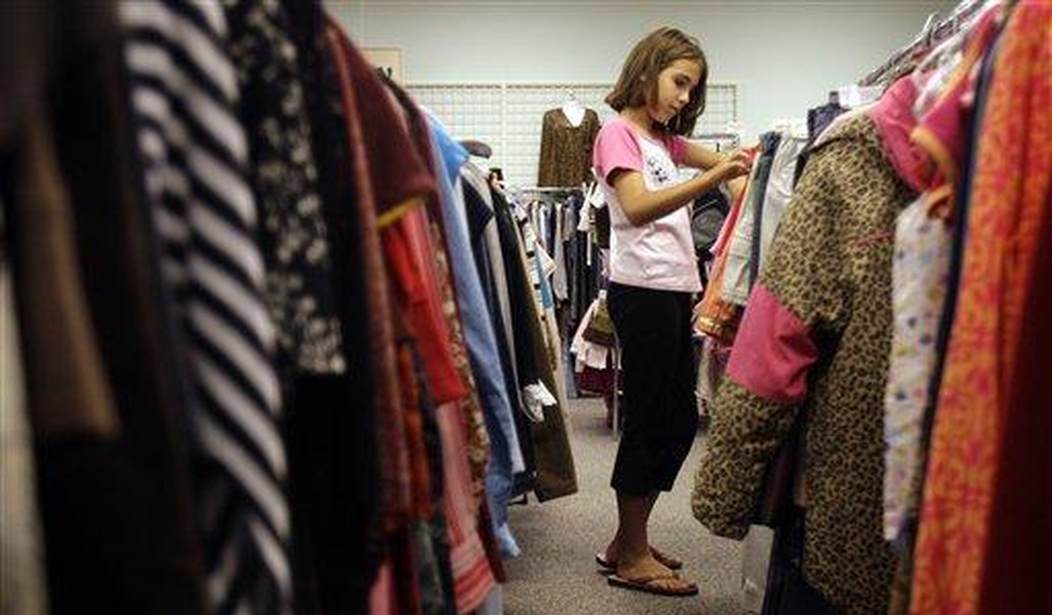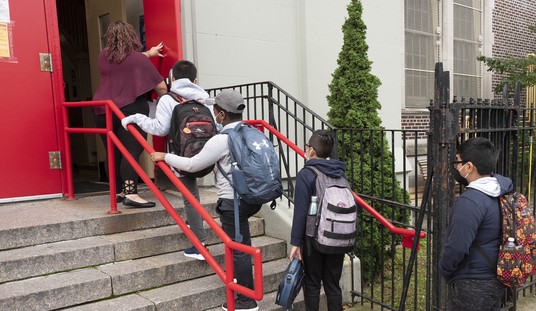Selling and buying second-hand clothing is an established and mutually beneficial retail market. Some people sell clothes they no longer want or need to make a couple of extra bucks. Budget-conscious shoppers stretch their dollars by buying used clothes. Charitable people donate clothing and goods to thrift shops, which then sell them at far lower prices than new items cost in order to raise money for hospitals and other public welfare institutions, while the bargains also benefit low-income shoppers. Young adults enjoy going “thrifting” as a way to buy decent clothes while also ironically wearing looks from the recent past. And finally, fashion fiends spend many happy, stress-relieving hours shopping for used clothing, either in thrift shops or on eBay, ThredUp, or any of the many other digital marketplaces.
Used clothing is doing fine. Everyone involved in buying and/or selling second-hand clothes has a role, a budget, and an income stream. The marketplace provides fun, assistance, profit, and benefits to millions of people. The buying and selling of used clothing is not broken, but here come the know-it-alls to fix it nonetheless.
A couple weeks ago, I reported that the busybodies of Brussels had decided to micromanage the apparel industry as part of their latest round of “Green New Deal” increased regulation and control:
On Wednesday, as part of its Green New Deal, the EC released the “EU Strategy for Sustainable and Circular Textiles” (available here), a framework for bending the textile and apparel industry to its will by completely retooling it within the next eight years. …
The plan specifies that “Increased durability will enable consumers to use clothing for longer and at the same time support circular business models such as reuse, renting and repair, take-back services and second-hand retail, in a way that creates cost-saving opportunities to citizens.”
It’s amazing, what a ginned-up “climate crisis” can justify. The Forces of Light are deconstructing the second-hand clothing market for your own good, you see. And naturally, as with any other “green” initiative, an already thriving industry will be taken from the hands of those who built it and run it and transferred to the woke corporate counterparts of the bureaucrats who cooked up the rationale for doing so.
Related: At Least Big Left Isn’t Telling Us What to Wear … Oh
Retail Dive is reporting that “The secondhand market is set to expand 10% to 15% over the next decade, according to McKinsey and Company; ThredUp sees it reaching $77 billion in four years.”
The apparel big boys are bellying up to the new opportunity and trying out various business models to re-sell the stuff they already sold, while “adding customer value” (aka costs) by enhancing the deal with pricey marketing and middlemen. Some of them, such as Target, are partnering with resaler ThredUp. ThredUp has offered “Resale as a Service” (RaaS) for some years now, and Target has partnered with them before. According to Retail Dive, “[Target’s new pilot program] offer includes about 400,000 women’s and kids items from Target’s owned brands as well as national and premium brands curated from ThredUp’s own assortment, the retailer said.”
ThredUp’s RaaS model currently serves 41 brands, which also include Eileen Fisher, lululemon, REI, Steve Madden, Oscar de la Renta, and even Rent the Runway — which itself relies on re-using clothing.
Other manufacturers are reselling their own pieces themselves. Wrangler, for example, sells “vintage” and “pre-loved” pieces on their own website — and the prices are steep.
Apparently, the apparel industry is expected to realign itself to a re-use model similar to the auto industry: people will buy, use, then trade in or resell their apparel, bags, and shoes. Customers on a budget can buy pre-owned items. Clothing rentals will also become a thing. All of this is of a piece with the millennial mindset, which is less interested in ownership of anything — houses, cars, and now, clothes.
Young elite shoppers, who make up a prime chunk of second-hand clothing consumers, are more likely to see such shopping as a virtue because they went through the woke education system that teaches such behaviors “reduce their carbon footprint.”
But all these “reborn” items have to come from somewhere. Every warm coat, decent pair of shoes, and cute prom dress that winds up back on Big Fashion’s racks (at a higher price than in a thrift shop) is one less piece for a needy person to purchase, or for the church thrift shop to sell to fund its cancer volunteers program or soup kitchen. And don’t even get me started on the citizens of impoverished countries who depend on shipments of donated clothing from organizations like Goodwill.
While the green goody-two-shoes pat themselves on the back for discovering second-hand clothing, they will also earn themselves plenty of greenbacks while pricing out the consumers who rely on the market. Nice.










Join the conversation as a VIP Member